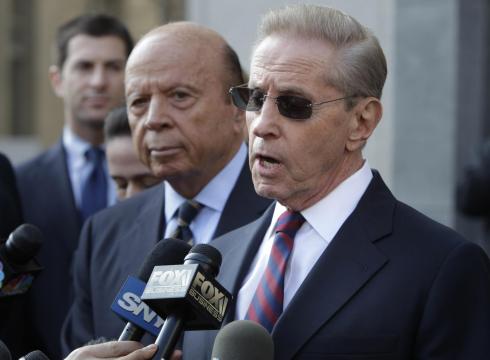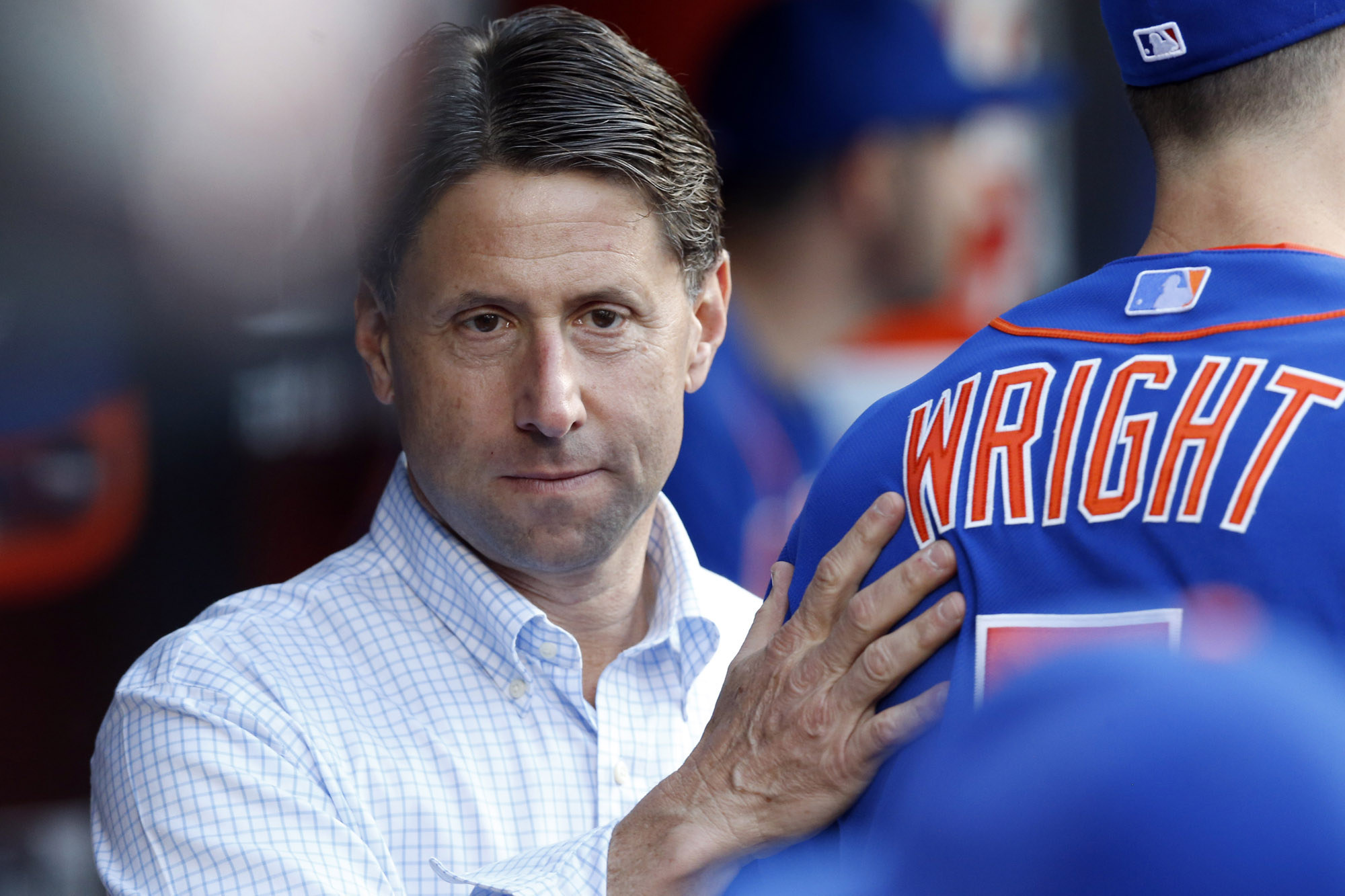Ever since the end of the 2009 season, financial issues have been a critical if not overriding factor for the New York Mets and their decision making.

Whether it was the $140+ million major league payroll loaded with “toxic” contracts for a sub .500 mostly veteran team, the subsequent decline in attendance and related revenue, possible effects of the Madoff-Ponzi-scheme, including the claim filed by the administrator of the Madoff estate or some heavy leveraging of the Mets and related entities with all sorts of debt – it´s often been Finances first. And Baseball a very distant second.
Interestingly enough though, very little has been written or said about the Mets´ CURRENT financial situation. Basically, the claim/reporting – based on what transpired over the past few years – has been “they have no money” and it appears, fans, writers and the public believe and seemingly have accepted the Mets will be operating as a de-facto small-market team for a while.
That has led to discussion whether the Mets almost have to trade Bartolo Colon and Daniel Murphy for financial reasons leading up towards 2015 to possibly clear the roughly $20 million that duo will be making next year. Or whether the Mets even have the ability to think about taking on a significant contract such as that of Troy Tulowitzki or Carlos Gonzalez.
Shouldn’t we be discussing whether Noah Syndergaard or Rafael Montero (and Matt Harvey next year) are sufficient replacements for Colon or if and when Wilmer Flores, Matt Reynolds or Dilson Herrera can replace Daniel Murphy just fine at 2B going forward?
Shouldn’t the discussion be more about the pros and cons of parting with several promising young pieces in exchange for Tulo or CarGo than killing the debate with a “but they are too expensive anyway” comment?
 Have the Mets themselves – successfully – lulled fans & media into a perception and belief that the payroll permanently has to be frozen in the $85 million range that it has hovered around for three years now?
Have the Mets themselves – successfully – lulled fans & media into a perception and belief that the payroll permanently has to be frozen in the $85 million range that it has hovered around for three years now?
And that a main concern right now should be that just keeping together the current roster minus free agents Chris Young, Dice-K and Bobby Abreu will probably cost over $90 million already? (Adam Rubin did the math a few days ago.)
Isn’t there some new evidence that the Mets currently are operating well below of what their “break even” ceiling actually is? Isn’t it time to reevaluate the situation? Books can and have been written about financial reorganizing or how the Mets got into this situation. But hasn’t the situation changed over the past couple of years ?
Leaving out the profits SNY – an entity majority owned by the Mets ownership group – has been earning, the explicitly stated financial goal for the Mets has been to “break even.” Something which it has failed to do for at least the past 4 years.
Operating losses – according to what´s been available via a google search or explicit statements by people who should know – were massive in 2010 and 2011 (Losses of $51 and $70 million reportedly) and a lot less severe over the past two years (23 million in 2012 and 10 million in 2013) as the major league payroll was cut by about $50 million. While instead of the dramatic decline in attendance (including premium seats) from 2009 through 2011, the Mets from 2012 through this season have merely experienced something between regression or stagnation at a very low level.
Unfortunately, there´s no detailed balance sheet for the Mets entity or “sister” companies such as SNY that are publicly available. But from what there is to gather, the financial picture is looking a lot better now than it has in recent past. The 2014 payroll, minus Ike Davis, for now projects to end up just around or even below $85 million and thus between $5-10 million less than it has been for the past couple of years.
The decline in attendance has apparently been stopped in 2014. And at least thus far, every loan due against the Mets has apparently been refinanced. Most of all though, the new National TV deal that kicked in for the 2014 season flushes in an extra $25-30 million – not subject to revenue sharing for every MLB franchise. This is EXTRA revenue for the Mets that wasn´t there in 2013 or in previous years.
Do the math yourself: You save between $5-10 million on payroll, attendance related revenue at worst freezes at a low level or even improves slightly and you also get an extra $25-30 million in new revenue flushed into your operation. That’s a $30 to $35 million turnaround compared to 2013 and 2012 where the team – on average – reported losses of $16.5 million per year.
 So, assuming all other expenses (revenue sharing, travel, interest payments on debt, minor league operations, etc.) have remained about the same – and there is no indication of any significant change here between now and the past couple of years – this makes it seem probable the 2014 Mets figure to make an operating profit somewhere between $15 and $20 million if the payroll ends up close to its projection of $85 million. And in turn, the “break even” payroll would really be in the $100 to $105 million range for 2014.
So, assuming all other expenses (revenue sharing, travel, interest payments on debt, minor league operations, etc.) have remained about the same – and there is no indication of any significant change here between now and the past couple of years – this makes it seem probable the 2014 Mets figure to make an operating profit somewhere between $15 and $20 million if the payroll ends up close to its projection of $85 million. And in turn, the “break even” payroll would really be in the $100 to $105 million range for 2014.
Going forward, if the Mets happen to look like a more promising team in 2015 behind a full arsenal of high end young pitching and maybe the addition of another bat, attendance and revenue figure to rise, further lifting the payroll ceiling going forward.
Considering expected arbitration raises going forward, the injury to Matt Harvey and IP limits for various young arms, it’s actually understandable why the Mets didn’t already approach that payroll ceiling this year. But as it is, there’s really no reason why the 2015 payroll shouldn’t at least be in the $100 to 105 million range. And doesn’t that even make for some positive PR regarding ownership, showing their determination to field a winner?
Thus, trading Colon and / or Murphy should be BASEBALL decisions first and foremost. Just like acquiring a Tulowitzki or another high priced player should mainly be debated in terms of the young talent it’d take to make such a move instead of focusing on the annual salary. Sure, there’s no way the Mets will have a Top 5 in the majors payroll again – like they did on average from 1990 through 2011.
But it’s very likely, they’ll at least gravitate towards a “middle of the pack” payroll again rather sooner than later. Still, odd and tough to explain for a New York based franchise – but a lot better than finances being the overriding factor. So, show us the money!















